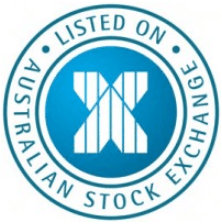Stan Shamu for Chris Weston, Chief Market Strategist at IG Markets
It has been a slow start to the week for Asia, with equities around the region mostly weaker as investors focused on the Scottish referendum.
Additionally China is closed for the mid-Autumn festival, which has just limited the activity around the region. While China is closed, the country still released a record August trade balance figure of $49.84 billion, which smashed expectations of $40 billion. A 9.4% rise in exports and 2.4% drop in imports drove the much stronger trade balance reading. Exports were above expectations while imports were well below expectations. While the figures are beneficial for China, in that exports remain strong despite a drop in manufacturing activity, they certainly showed some worrying signs for other major trading partners. China’s imports of key commodities for Australia continue to decline. In particular, iron ore imports into China dropped significantly by both volume and value. This probably confirms the sharp drop we’ve seen in iron ore prices recently, as limited restocking is taking place. Processing with imported materials actually contracted a touch – probably a result of the recent contraction in manufacturing activity. There has been plenty of talk around China looking to restock towards the back end of the year which would eventually stabilise iron ore. However, sentiment will remain fragile for now. One commodity that was in hot demand through August was crude oil, which enjoyed strong imports into China.
AUD holds its ground
After a relatively flat start, the ASX 200 extended its losses on the back of China’s trade balance numbers. The next key support level is in the 5,550 region which was previous resistance. Surprisingly, the materials are actually not performing that badly, with some of the iron ore plays actually gaining some ground. Regardless, I remain of the opinion that rallies will continue to be used as an opportunity to sell some of these stocks. The resilience of the AUD will also remain a concern for the local market. AUD/USD tested $0.9400 on Friday after a disappointing payrolls print from the US saw the greenback cool off a bit. While the pair has pulled back a touch, it’s facing some real tests this week with NAB business confidence, home loans, Westpac consumer sentiment and jobs numbers. After that shocking jobs reading for July, investors will be eyeing a bounce in August. There is also a bit of activity in China, with new loans, CPI, PPI, industrial production, fixed asset investment and retail sales all on the calendar. All these releases will be a key test for the AUD, after having continually outperformed.
Cable slips to November 2013 lows
Perhaps the most interesting move in the FX space today is the weakness seen in the sterling. Cable dropped from around $1.6326 to a low of $1.6166 after The Sunday Times YOUGOV poll showed the ‘yes’ vote for Scotland’s independence from the UK ahead for the first time. The poll put the yes vote at 51% with the unionists at 49%. While most polls still have a ‘no’ in front, the market is now concerned that the gap between the two has closed significantly only a couple of weeks before the referendum. A concern here is that the market is yet to price in the chaos that would stem from a yes vote on September 18 – particularly the currency Scotland would use and how their debt would be treated. While traders will be waiting to see the gap from today’s open filled, there is a good chance we’ll see cable extend its losses in the near term. There is resistance in the $1.6286 region – the 38.3% retracement of the July 2013 low to July 2014 high.
It will also be interesting to see what the latest poll means for equities in London trade. We are currently calling the FTSE flat, while the DAX is pointing to a firmer start. Data is sparse on the European calendar this week. ECB President Mario Draghi’s speech at the ECOFIN meetings later in the week is likely to draw most of the attention. In the US, analysts are likely to be looking ahead to next week’s FOMC meeting.

